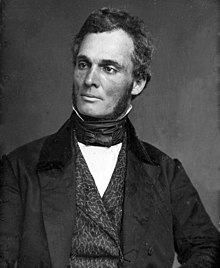
The Underground Railroad was a network of secret routes and safe houses established in the United States during the early to mid-19th century. It was used by enslaved African Americans primarily to escape into free states and from there to Canada. The network, primarily the work of free African Americans, was assisted by abolitionists and others sympathetic to the cause of the escapees. The slaves who risked capture and those who aided them are also collectively referred to as the passengers and conductors of the Railroad, respectively. Various other routes led to Mexico, where slavery had been abolished, and to islands in the Caribbean that were not part of the slave trade. An earlier escape route running south toward Florida, then a Spanish possession, existed from the late 17th century until approximately 1790. However, the network generally known as the Underground Railroad began in the late 18th century. It ran north and grew steadily until the Emancipation Proclamation was signed by President Abraham Lincoln. One estimate suggests that, by 1850, approximately 100,000 slaves had escaped to freedom via the network.
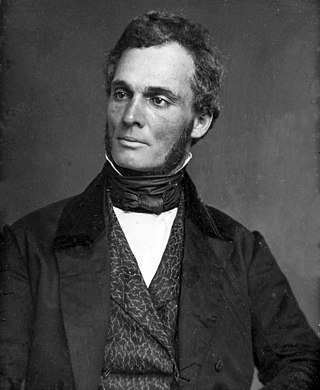
Robert Purvis was an American abolitionist in the United States. He was born in Charleston, South Carolina, and was likely educated at Amherst Academy, a secondary school in Amherst, Massachusetts. He spent most of his life in Philadelphia, Pennsylvania. In 1833 he helped found the American Anti-Slavery Society and the Library Company of Colored People. From 1845 to 1850 he served as president of the Pennsylvania Anti-Slavery Society and also traveled to Britain to gain support for the movement.

William Still was an African-American abolitionist based in Philadelphia, Pennsylvania. He was a conductor of the Underground Railroad and was responsible for aiding and assisting at least 649 slaves to freedom towards North. Still was also a businessman, writer, historian and civil rights activist. Before the American Civil War, Still was chairman of the Vigilance Committee of the Pennsylvania Anti-Slavery Society, named the Vigilant Association of Philadelphia. He directly aided fugitive slaves and also kept records of the people served in order to help families reunite.
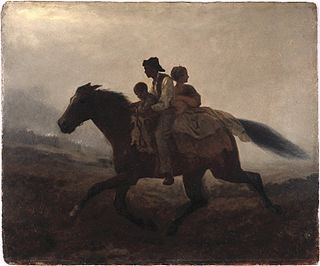
In the United States, fugitive slaves or runaway slaves were terms used in the 18th and 19th centuries to describe people who fled slavery. The term also refers to the federal Fugitive Slave Acts of 1793 and 1850. Such people are also called freedom seekers to avoid implying that the enslaved person had committed a crime and that the slaveholder was the injured party.
A vigilance committee is a group of private citizens who take it upon themselves to administer law and order or exercise power in places where they consider the governmental structures or actions inadequate. Some vigilance committees engaged in forms of vigilantism such as aiding fugitive slaves in violation of the laws on the books at the time. Beginning in the 1830s committees of abolitionists worked to free enslaved people and transport them to freedom.

Thomas Garrett was an American abolitionist and leader in the Underground Railroad movement before the American Civil War. He helped more than 2,500 African Americans escape slavery.

William Whipper was a businessman and abolitionist in the United States. Whipper, an African American, advocated nonviolence and co-founded the American Moral Reform Society, an early African-American abolitionist organization. He helped found one of the first black literary societies in the U.S known as the Reading Room Society whose constitution stated that its aim was the "mental improvement of the people of color in the neighborhood of Philadelphia." William Whipper epitomized the prosperity that Northern Blacks were able to attain in the mid-19th century.

Jane Johnson was an African-American slave who gained freedom on July 18, 1855, with her two young sons while in Philadelphia with her slaver and his family. She was aided by William Still and Passmore Williamson, abolitionists of the Pennsylvania Anti-Slavery Society and its Vigilance Committee.
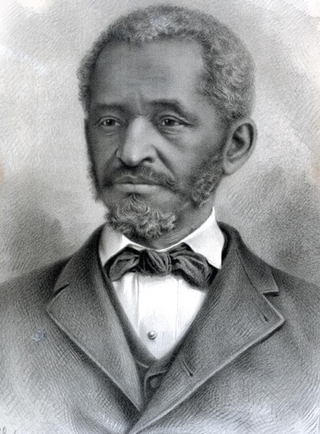
Lewis Hayden escaped slavery in Kentucky with his family and reached Canada. He established a school for African Americans before moving to Boston, Massachusetts. There he became an abolitionist, lecturer, businessman, and politician. Before the American Civil War, he and his wife Harriet Hayden aided numerous fugitive slaves on the Underground Railroad, often sheltering them at their house.

The Boston Vigilance Committee (1841–1861) was an abolitionist organization formed in Boston, Massachusetts, to protect escaped slaves from being kidnapped and returned to slavery in the South. The Committee aided hundreds of escapees, most of whom arrived as stowaways on coastal trading vessels and stayed a short time before moving on to Canada or England. Notably, members of the Committee provided legal and other aid to George Latimer, Ellen and William Craft, Shadrach Minkins, Thomas Sims, and Anthony Burns.
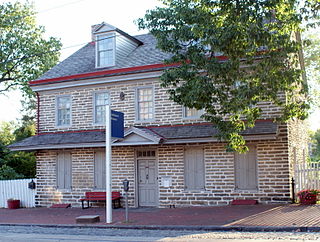
The John Johnson House is a National Historic Landmark in the Germantown section of Philadelphia, significant for its role in the antislavery movement and the Underground Railroad. It is located at 6306 Germantown Avenue and is a contributing property of the Colonial Germantown Historic District, which is also a National Historic Landmark. It is operated today as a museum open to the public.

William Cooper Nell was an American abolitionist, journalist, publisher, author, and civil servant of Boston, Massachusetts, who worked for the integration of schools and public facilities in the state. Writing for abolitionist newspapers The Liberator and The North Star, he helped publicize the anti-slavery cause. He published the North Star from 1847 to 1851, moving temporarily to Rochester, New York.

Harriet Forten Purvis was an African-American abolitionist and first generation suffragist. With her mother and sisters, she formed the first biracial women's abolitionist group, the Philadelphia Female Anti-Slavery Society. She hosted anti-slavery events at her home and with her husband Robert Purvis ran an Underground Railroad station. Robert and Harriet also founded the Gilbert Lyceum. She fought against segregation and for the right for blacks to vote after the Civil War.

Amy Hester "Hetty" Reckless (1776–1881) was a runaway slave who became part of the American abolitionist movement. She campaigned against slavery and was part of the Underground Railroad, operating a Philadelphia safe house. She fought against prostitution and vice, working toward improving education and skills for the black community. Through efforts including operating a women's shelter, supporting Sunday Schools and attending conferences, she became a leader in the abolitionist community. After her former enslaver's death, she returned to New Jersey and continued working to assist escaping slaves throughout the Civil War.

The history of African Americans or Black Philadelphians in the city of Philadelphia, Pennsylvania has been documented in various sources. People of African descent are currently the largest ethnic group in Philadelphia. Estimates in 2010 by the U.S. Census Bureau documented the total number of people living in Philadelphia who identified as Black or African American at 644,287, or 42.2% of the city's total population.

The New England Freedom Association was an organization founded by African Americans in Boston for the purpose of assisting fugitive slaves.

Stephen Myers was an abolitionist and agent of the Underground Railroad through the 1830s–1850s. He was also the editor of multiple abolitionist newspapers such as The Elevator, The Northern Star, and Freeman's Advocate, and The Telegraph and Temperance Journal.

Elijah Funk Pennypacker was a politician, abolitionist and station master in the Underground Railroad in the United States, in the years leading up to the American Civil War. He operated in Chester County, Pennsylvania. Pennypacker's home, White Horse Farm, was a safe house during the time that he participated in the Underground Railroad. As a station master in the Underground Railroad, Pennypacker reportedly aided hundreds of fugitive slaves in their escape to freedom, without any having been apprehended by authorities or by bounty hunters. He also served as a member of the Pennsylvania House of Representatives, representing Chester County from 1832 to 1833 and from 1835 to 1836.
Joseph Cassey (1789–1848) was a French West Indies-born American businessman, real estate investor, abolitionist, and activist. He prospered as a barber, and as well as a wig maker, perfumer, and money-lender. He lived in the historic Cassey House in Society Hill, and was active in the African American elite community in Philadelphia.

Nathaniel W. Depee was an American activist, abolitionist, and merchant tailor. He was active in the Underground Railroad, and in Black politics in Philadelphia in the 1830s through 1860s.
